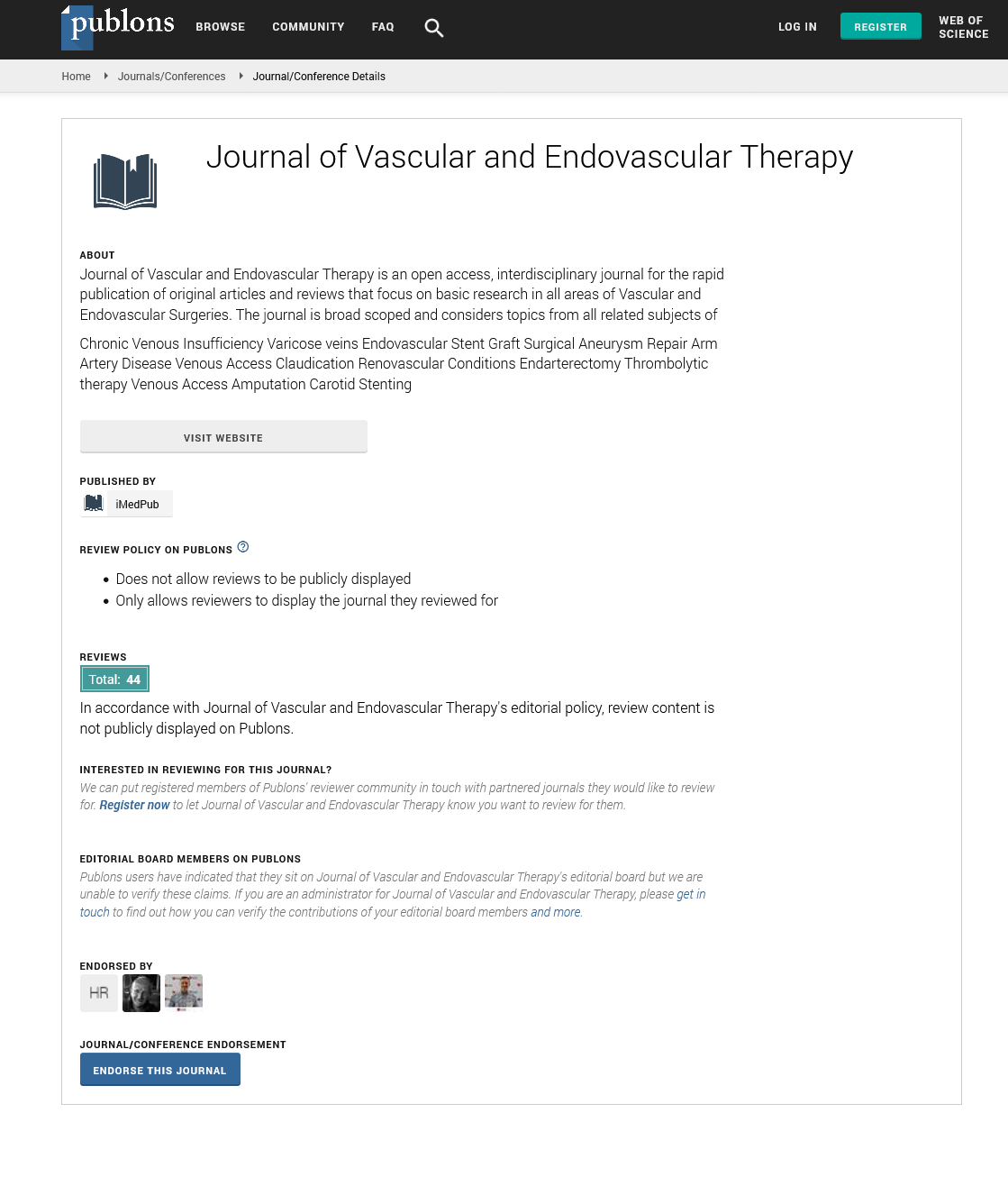ISSN : 2634-7156
Journal of Vascular and Endovascular Therapy
Can carotid endarterectomy only be indicated by Doppler ultrasonography?
4th Edition of World Congress & Exhibition on Vascular Surgery
March 28-29, 2019 Rome, Italy
Fatima El Hajj and Christiano Stchelkunoff Pecego
IAMSPE, Brazil
ScientificTracks Abstracts: J Vasc Endovasc Therapy
DOI: 10.21767/2573-4482-C1-005
Abstract
Stroke is a disease of great health relevance due to its morbidity and high costs generated. Symptomatology varies from asymptomatic, fugitive amaurosis, transient ischemic attack (TIA) and direct manifestations of stroke. In view of this, prevention would be the best option to reduce costs secondary to morbidity and mortality due to stroke. Carotid endarterectomy (ACE) is the most common preventive procedure. ECA is a surgical technique consolidated 50 years ago. Large studies such as NASCET, VA, ECST, ACAS and ASCT have already analyzed and proven the indications, cost-effectiveness and limitations of the technique. Digital angiography is the gold standard for determining the degree of carotid stenosis, as methods of investigating carotid stenosis and defining the surgical indication of endarterectomy. Because it is an invasive examination, with a risk of major complications (TIA/stroke) of approximately 4%, it has been progressively replaced by tomography (Angio-CT) or resonance angiography (Angio- NMR). At the same time, Doppler ultrasonography (US) is a non-invasive, low-cost method of screening carotid stenosis. With the incessant progress of diagnostic methods, Doppler ultrasonography (US) has proven to be a method of choice for noninvasive evaluation of the carotid arteries. The degree of carotid artery stenosis is largely based on either a peak systolic velocity or final diastolic velocity analysis, or both, of the carotid artery. Doppler scanning in pulsed mode combined with B-mode ultrasound allows the diagnosis of carotid atheromatous lesions (>70% stenosis), with sensitivity and specificity above 90%. The US adds comparative advantages to the other contrasted methods, since it is a lower cost procedure, it lacks complications and contraindications, it is easy to access, it does not require the use of contrast, and it also has information about plaque morphology, stenosis percentage and topography of the carotid bifurcation.
Recent Publications
1. Brunno Cezar Framil Sanchez, Lineu Amaro Rodrigues Junior, Felipe Trentin Neves, Thiago Correa Tambelli, Fernando Eduardo Paulatti Frederico, Fatima Mohamad El Hajj, Juliana Monteiro de Abreu, Tatiana Milunovic Lobo Rosa, Alexis Iury Framil Sanches and Antônio Alberto Ramos Argento (2011) Giant condyloma. Journal of the Faculty of Medical Sciences of Sorocaba 13:25-27.
Biography
Fatima El Hajj is a Brazilian – Lebanese Vascular Surgeon. MD in Pontifical Catholic University of São Paulo – PUCSP. General Surgery degree in Municipal Public Server Hospital of São Paulo – HSPM. Vascular Surgery Degree in Estadual Public Server of São Paulo – IAMSPE. Vascular Surgeon at AnaliaMed Health and Wellness. CEO AnaliaMed Diagnose Center.
E-mail: fatimamedlv@hotmail.com
Google Scholar citation report
Citations : 177
Journal of Vascular and Endovascular Therapy received 177 citations as per Google Scholar report
Journal of Vascular and Endovascular Therapy peer review process verified at publons
Abstracted/Indexed in
- Google Scholar
- Open J Gate
- Publons
- Geneva Foundation for Medical Education and Research
- Secret Search Engine Labs
Open Access Journals
- Aquaculture & Veterinary Science
- Chemistry & Chemical Sciences
- Clinical Sciences
- Engineering
- General Science
- Genetics & Molecular Biology
- Health Care & Nursing
- Immunology & Microbiology
- Materials Science
- Mathematics & Physics
- Medical Sciences
- Neurology & Psychiatry
- Oncology & Cancer Science
- Pharmaceutical Sciences
